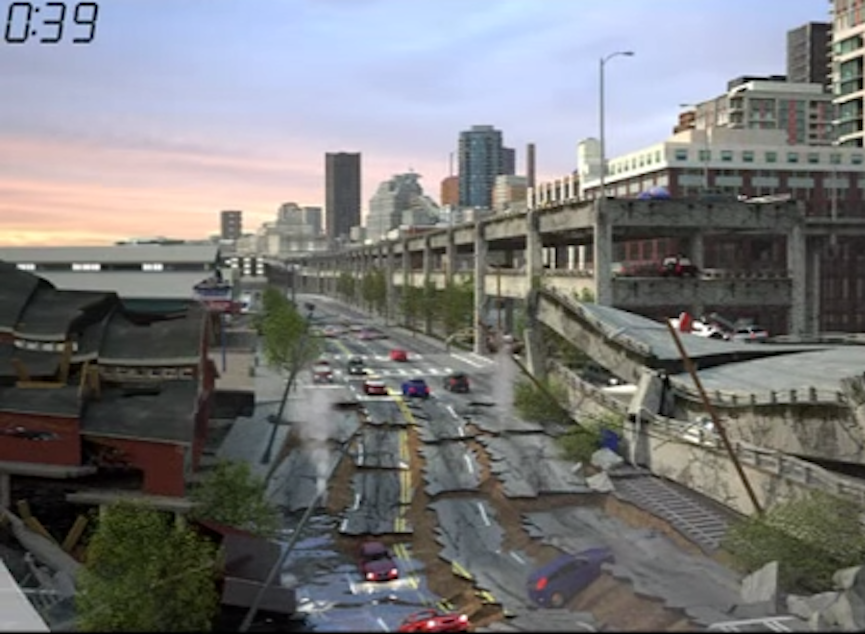Where Are You On Seattle's New Earthquake Damage Map?

You know a major earthquake in Seattle is possible – there was that scary New Yorker article this year with the headline: "The Really Big One."
Now you’ve got a new online tool to help you prepare.
Seattle’s Office of Emergency Management has released an interactive map showing how badly various neighborhoods might be affected by a quake and any ensuing ground liquefaction or tsunami. The tool also covers risks from other disasters, such as landslides and flooding.
“When you’re out there in the community talking to people, it becomes much more real to them when they see it on the map, when they can look at their house, when they can look at their place of work,” Matt Auflick with the emergency management office told KUOW’s Bill Radke.
“Our goal is to get people thinking about these things.”
Sponsored
The map allows you to pinpoint your address in Seattle to see what the various risks are. Radke asked about the quake danger at KUOW’s studios in the University District.
“Some areas of the city will shake more than others,” Auflick said. “This is mostly due to the geology in that area, what type of soil is there, what type of rock is under that soil.”
The U District is in an orange area on the map, he said. “It will experience relatively more shaking than some other areas, but not the highest levels like we would see in those areas where there’s liquefaction.”
The map shows earthquake force as a percentage of gravity – the higher the number, the more extreme the shaking.
The top range on the map (110-145 percent) corresponds to the most extreme earthquake damage – masonry and frame structures would be destroyed. The lower end of the scale (20-30) on the Seattle map is still considered “very strong” – enough force to cause moderate damage to well-built structures or considerable damage to poorly built ones.
Sponsored
According to the map, if you lived in the same house for 50 years, you would have a 10 percent chance of experiencing a quake at the strength projected for your neighborhood.
So how useful is knowing that?
Auflick says he hopes the main use will be to help people plan for disaster. But he agreed that it could help if you’re trying to decide where to buy a home.
One Seattle neighborhood in the most extreme range is Pioneer Square, which the map shows on an area prone to ground liquefaction.
Melody Paxton, a real estate agent with Windermere Real Estate, said she would still recommend properties there but with a caveat about any historic building with no earthquake retrofitting.
Sponsored
“In my personal opinion it would not be as valuable a property and I would definitely inform my clients about that,” she said.
See the city of Seattle's earthquake hazards map. King County also has information about preparation for earthquakes and other disasters.
Produced for the Web by Gil Aegerter.

